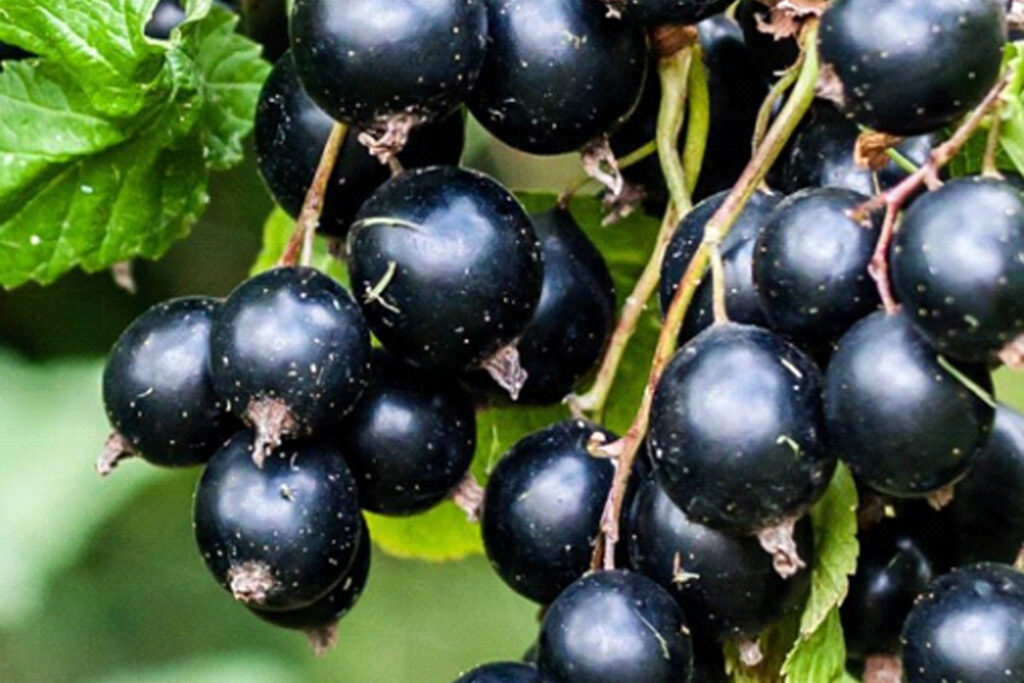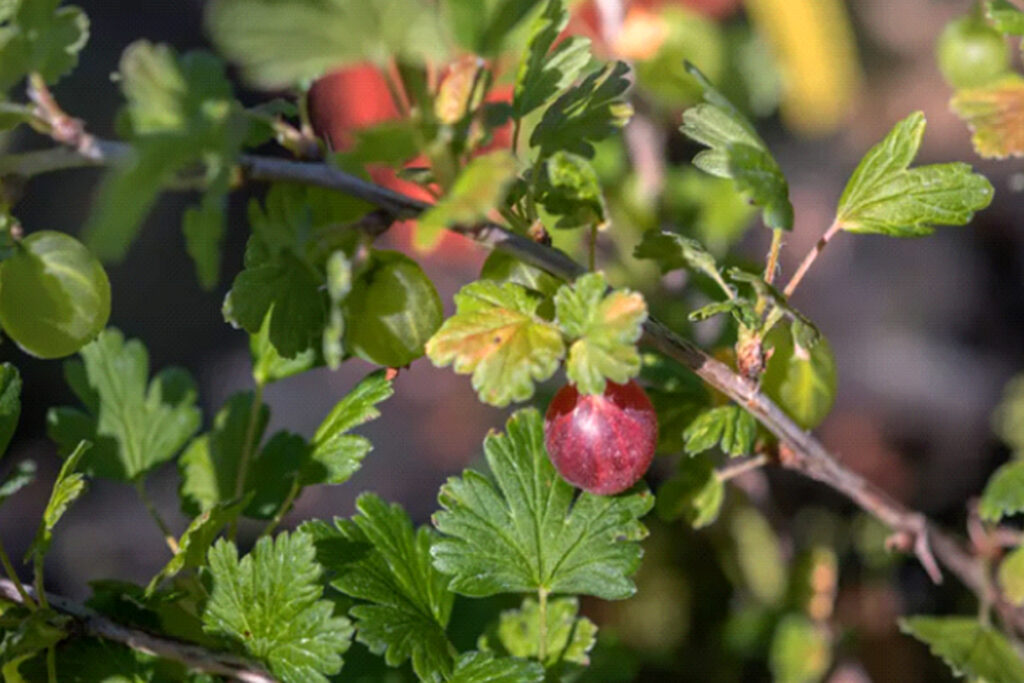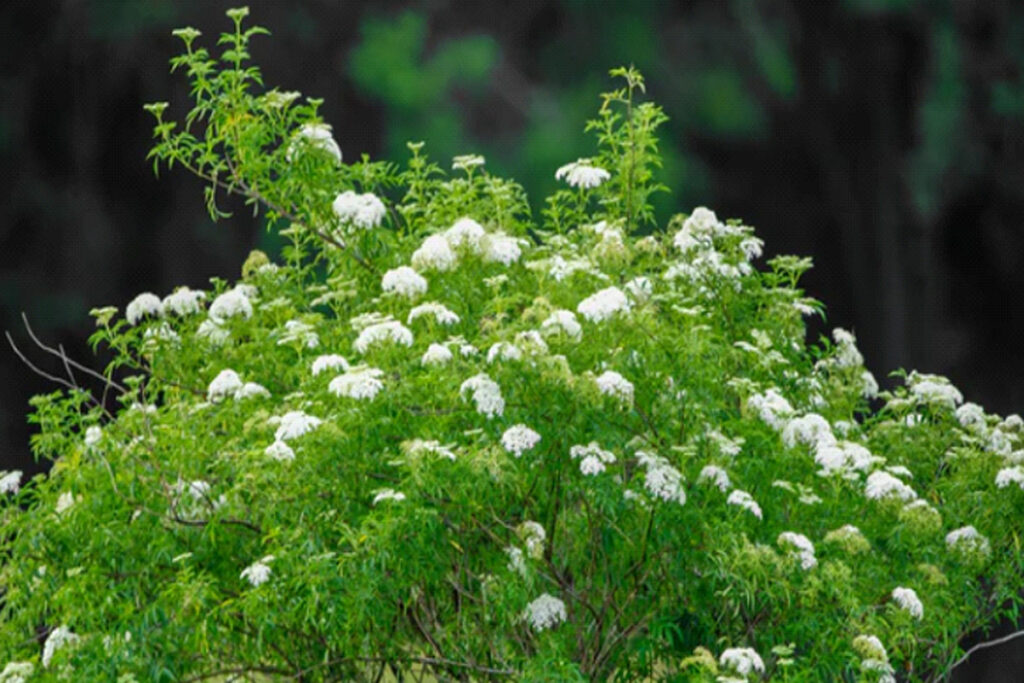Table of Contents
Gardening is a joy, but it comes with its own set of challenges, especially when your garden is shaded. Whether you have a backyard garden tucked under the trees or a patio garden that doesn’t get much sun, growing fruits and vegetables in shaded areas can be rewarding. This article will help you maximize growth by discovering the best fruits and vegetables for shaded gardens, ensuring you can enjoy a bountiful harvest even in low-light conditions.
Understanding Shaded Gardens
Shaded gardens, as the name suggests, are areas with limited direct sunlight. These gardens can range from partial shade (about 3-6 hours of sunlight per day) to deep shade (less than 3 hours of sunlight per day). The type of shade in your garden will significantly influence what you can grow.
⦁ Partial Shade: Receives 3-6 hours of sunlight, either in the morning or late afternoon.
⦁ Dappled Shade: Light filters through trees, providing a pattern of sun and shade.
⦁ Deep Shade: Less than 3 hours of direct sunlight, often in spots under dense tree canopies or next to tall buildings.
Benefits of Shaded Gardens
Although sunlight is necessary for plant development, your garden doesn’t need to be completely covered with it. With careful design, shaded gardens may provide a special and lovely setting that can flourish. Here’s how to turn a partially shaded area into a sanctuary for your plants:
A Chilled Haven: Fighting the Heat for Contented Plants
In hotter areas, direct sunlight may be very painful. Plants that suffer in extreme heat find a cooler climate in shaded gardens. Because they might dry out rapidly in the sun, fragile kinds or those with shallow root systems will benefit the most from this. Plants are less stressed in a shaded refuge, which frees them up to concentrate on developing and flowering. Shaded Gardens.
Extending the Bounty of the Season: An Extended Growing Window
Shade can lengthen the growth season. Your summer veggies and flowers can thrive longer in a shady garden due to the milder temperatures that can postpone the fall frost. On the other hand, in the spring, shady spots warm up more gradually, shielding delicate seedlings from sudden temperature drops. It’s possible to squeeze in an additional harvest and enjoy a greater range of plants over this extended period of good weather.
Preserving that Priceless Water: Increase Hydration and Reduce Evaporation
Water is a valuable resource, particularly in the summer. A shaded garden is beautiful since the soil evaporation is naturally decreased. Because the soil is heated by direct sunshine, moisture evaporates more quickly. By keeping the soil colder and conserving moisture for longer, shade serves as a protective barrier. This means that your plants will require less frequent watering, which will save you money, time, and precious water.
Challenges of Shaded Gardens
While a shaded garden offers a cool retreat on a scorching summer day, it also presents unique challenges for gardeners. Here, we’ll delve into the three main hurdles you might face when cultivating a thriving oasis in a low-light environment.
Limited Sunlight: The Lifeblood of Plants
Sunlight is the fuel that powers plant growth. Plants use sunlight through photosynthesis to convert water, carbon dioxide, and minerals into essential nutrients. In a shaded garden, plants receive less sunlight, which can hinder their growth and development. This limited light can manifest in several ways:
⦁ Stunted growth: Plants may grow slower and reach a smaller overall size compared to their sun-loving counterparts.
⦁ Sparse flowering: Flowering plants might produce fewer blooms or have less vibrant flowers due to the lack of sunlight needed for optimal flower production.
⦁ Leggy growth: Plants may stretch towards any available light source, resulting in a weak, spindly appearance.
Mold and Mildew: The Shadowy Scourge
Shade often creates a cool, damp environment – a breeding ground for fungal diseases like mold and mildew. These unwelcome guests thrive in areas with poor air circulation and limited sunlight, which are common characteristics of shaded gardens. Mold and mildew can damage plants by: Shaded Gardens.
⦁ Blocking sunlight: Fungal growth on leaves can obstruct sunlight from reaching essential plant parts.
⦁ Smothering plants: A heavy infestation can smother foliage, hindering respiration and overall plant health.
⦁ Spreading diseases: Fungal spores can easily spread to other plants in the vicinity, leading to a larger outbreak.
Slower Growth Rates: Patience is Key
In a shady garden, plants naturally grow more slowly than those in full sun because there is less sunlight available for photosynthesis. Gardeners who are eager to see their plants grow may find this irritating. But there are methods for promoting robust development in a shady area:
⦁ Choosing shade-tolerant plants: The key to success is choosing plants that are specially suited to flourish in low light. In the shadow, many lovely and intriguing kinds thrive, producing vivid leaves and distinctive textures.
⦁ Sufficient soil drainage: is necessary to avoid waterlogging, which can worsen fungal problems and compromise the health of the roots. To increase drainage, amend the soil with compost or other organic materials.
⦁ Optimizing air circulation: Prune crowded plants and consider incorporating features like stepping stones to promote airflow and discourage fungal growth.
By understanding the challenges of shaded gardens and implementing the right strategies, you can cultivate a beautiful and thriving haven, even in areas with limited sunlight.
Choosing the Right Fruits for Shaded Gardens
Don’t allow your garden’s lack of sunshine to keep you from producing scrumptious fruits! In locations with shade, a multitude of pleasant and gratifying fruit selections thrive. With the help of this advice, you will be able to choose the ideal fruits for your haven that can withstand the shadow.
Selection Criteria: Selecting the Right Shade
To make sure your selected fruits flourish in your shaded garden, take into account some crucial considerations before committing to any particular varieties:
⦁ Light Needs: Not every shade is made equal. Find out what kind of light each fruit type needs. While certain fruits—like pears and plums—may thrive in morning sun or dappled sunlight, others—like currants and gooseberries—tolerate complete shadow. You may enhance their success in your shadowed location by getting to know their preferred light sources.
⦁ Soil Conditions: Root rot can result from inadequate drainage, which is especially important in shaded areas. To enhance moisture retention, make sure the soil in your shady area drains well and has been supplemented with organic matter. Your fruit plants will grow in ideal conditions as a result of this. Shaded Gardens.
⦁ Fruit plants: grow to a variety of sizes when mature. Consider the mature size of the fruit plant you’re interested in and select a type that will fit comfortably in your given space. Planning for future development ensures that your plants have adequate space to establish and provide fruit.
Fruit Varieties that Thrive in Shade: A Bounty Awaits
Now that you know what to look for, let’s explore some delectable fruit options that will happily grow in your shaded haven:
Berry Bonanza:
Explore the world of berries! Currants, with their red, black, and white varieties packed with antioxidants, tolerate full shade. Gooseberries, similar to currants but requiring a few hours of morning sun, offer a tart flavor for jams and pies. Huckleberries, native North American shrubs, produce delicious blue or black berries and thrive in moist, shady areas. Finally, Juneberries (Saskatoon berries) are cold-hardy shrubs that prefer partial shade and produce sweet, juicy berries in early summer.
Beyond the Berries:
Rhubarb, technically a vegetable, adds a delightful tartness to pies and desserts. It prefers cool, moist soil and partial shade, making it a great choice for shaded areas with good drainage.
By following these selection criteria and exploring the shade-loving fruit options, you can cultivate a productive and rewarding mini-orchard in your shaded garden. With a little planning and the right choices, you can transform a potentially challenging space into a haven for delicious homegrown produce.
Top Fruits for Shaded Gardens
While many fruits require full sun to thrive, there are a surprising number of delicious options that flourish in shaded areas. Here’s a delightful selection to add beauty and bounty to your shaded garden:

Berries
Blueberries: While some blueberry varieties prefer full sun, low bush blueberries can tolerate light shade. These compact bushes produce sweet, antioxidant-rich berries perfect for eating fresh or baking into pies.

Raspberries: Many raspberry varieties can tolerate partial shade, as long as they receive a few hours of morning sun. These prolific plants produce juicy red or yellow berries throughout the summer, perfect for jams, pies, or snacking straight from the bush.

Blackberries: Similar to raspberries, some blackberry varieties can handle partial shade, particularly if the morning sun reaches the canes. These brambles produce tart-sweet blackberries perfect for jams, cobblers, or enjoying fresh.
Currants
Currants are a fantastic choice for shaded gardens, with many varieties tolerating full shade. These small tart berries come in red, black, and white varieties and are packed with antioxidants.

Red Currants: These bright red berries have a tart, refreshing flavor and are excellent for jams, jellies, and syrups.

Black Currants: Black currants offer a deeper, more intense flavor than red currants and are often used in jams, cordials, and liqueurs.

Gooseberries: Gooseberries, similar to currants, require slightly more sun than full shade, ideally a few hours of morning sun. These tart berries are perfect for jams, pies, and sauces.

Elderberries: Elderberries are a versatile addition to a shaded garden. These shrubs produce clusters of dark purple berries that can be used in jams, jellies, wines, and syrups. Important Note: Elderberries should only be consumed when cooked, as the raw berries can be toxic. Shaded Gardens.
With a little planning and the right selection of fruits, you can create a vibrant and productive haven in your shaded garden, enjoying delicious homegrown treats for years to come.
Cultivating Beauty in the Shade: Planting and Care
Shaded gardens provide a refreshing respite on a hot summer day, but they also pose particular problems for gardeners. Here, we’ll go into important planting and maintenance instructions to ensure your shaded refuge thrives:
- Soil Preparation: Creating a Foundation for Success
Healthy soil is essential to every successful garden, and shady locations are no exception. Here’s how to prepare soil in your shadowed space:
⦁ Improve Drainage: Shade sometimes results in reduced air circulation, which can contribute to soggy soil. Adding organic matter to the soil, such as compost or old manure, will increase drainage and aeration. This promotes healthy root development and inhibits fungal illnesses that flourish in moist environments.
⦁ Boost Fertility: Shaded locations may receive less organic matter from decaying leaves, resulting in less fertile soil. Adding compost or aged manure increases drainage while also enriching the soil with nutrients that your shade-loving plants require.
⦁ Test and Amend (Optional): For a more personalized strategy, do a soil test to assess the pH and nutrient levels. This can help you discover any shortages and treat them with suitable additives like lime (to raise pH) or organic fertilizer.
- Watering Methods: Keeping Your Shade-Loving Plants Hydrated
Shade-loving plants nonetheless require enough watering even if they receive less sunlight. Take into consideration the following crucial watering tips for your shaded landscape:
⦁ Monitor Moisture Levels: Observe the moisture content and don’t rely on a schedule. Every time you check, stick your finger a few inches into the soil to see how wet it is. Water the area well after the top inch of soil feels entirely dry to the touch.
⦁ Water Deeply: Try to water less often but with deeper water rather than more often with shallow water. This encourages roots to enlarge to reach moisture reserves deeper into the soil during dry times.
⦁ Mulch Matters: To keep moisture in the soil, control soil temperature, and keep weeds from competing with your plants for nutrients and water, cover them with a layer of organic mulch.
3. Pest and Disease Control: Proactive Protection in the Shade
Even shaded gardens are prone to pests and illnesses. Here’s how to maintain the health of your plants.
⦁ Promote Air Circulation: Proper air circulation helps to deter fungal illnesses that flourish in moist environments. Prune overcrowded plants and avoid putting them too close together.
⦁ Choose Resistant Plants: Choose plant kinds that are recognized for their resilience to pests and diseases found in shady locations.
⦁ Monitor regularly: Regularly inspect your plants for pests and illnesses. Early discovery enables prompt action with organic controls such as insecticidal soap or neem oil, whenever possible.
Follow these planting and maintenance guidelines to develop a flourishing and beautiful shaded garden. Remember that with the appropriate planning and strategy, your garden may thrive and create a cool, vivid oasis even in places with minimal sunshine.
Maximizing growth in shaded gardens: strategies for a thriving oasis
- Utilizing Light’s Power: Reflective Surfaces
Plants need on light for survival, and there are techniques to maximize its availability even in the shade. This is where reflecting surfaces come in.
⦁ Mirror, Mirror on the Wall: Place a light-colored fence, wall, or even a strategically oriented mirror to reflect sunshine into your shadowed region. This may greatly improve the quantity of light that your plants receive, enhancing their development and general health.
⦁ Light-colored Mulch: Opt for light-colored mulch, like straw or wood chips, instead of traditional dark mulch. This reflects light upwards towards the foliage, maximizing its exposure to sunlight.
- Pruning for a Better Future
Sometimes a little trimming may go a long way in increasing light penetration in your shady garden.
⦁ Selective pruning: is regularly inspecting your plants and removing any dead, diseased, or overloaded branches. This improves air circulation and directs sunlight to the healthiest sections of the plant.
⦁ Strategic Shaping: For taller plants, try cutting the lowest branches to let more light reach the lower foliage and any shade-loving understory plants. - The Power of Partnership: Companion Planting
Companion planting involves strategically placing different plant varieties together to benefit from each other’s presence. Here’s how it can help in a shaded garden:
⦁ Living Mulch: Plant low-growing, shade-tolerant groundcovers like ferns or creeping herbs as living mulch around your taller plants. These act as a natural weed suppressant and retain soil moisture, while still allowing some light to reach the base of your taller plants.
⦁ Beneficial Neighbors: Pair taller shade-loving plants with lower-growing sun-loving vegetables. The taller plants will provide dappled shade for the vegetables, while the vegetables won’t block too much light from reaching the taller plants.
⦁ By implementing these strategies – using reflective surfaces, pruning for better light penetration, and employing companion planting – you can significantly improve the light conditions in your shaded garden, fostering a thriving and vibrant haven for your favorite shade-loving plants.
Conclusion
Maximizing growth in shaded gardens requires selecting the right fruits and vegetables that thrive in low-light conditions. By choosing plants such as leafy greens, root vegetables, and certain fruit-bearing plants, you can create a productive garden even in less-than-ideal sunlight. Remember to tailor your gardening techniques to your specific climate and shade level for the best results.
For more detailed information on optimizing your shaded garden, consider exploring resources on gardening in low light and shade-loving edible plants. With the right knowledge and a bit of effort, your shaded garden can flourish and provide a bountiful harvest.
Also Read This Post: Best Top 5 Places to Visit.
